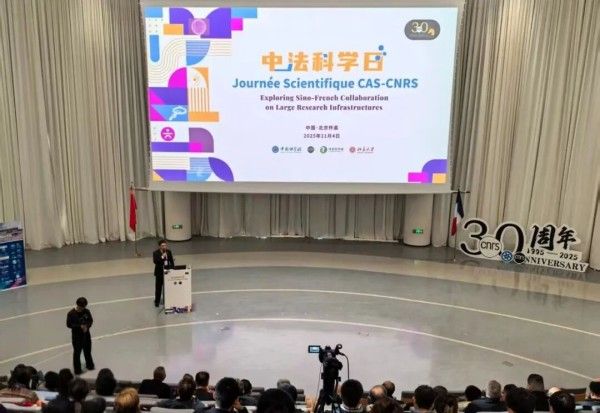November 4 – The “Journée Scientifique CAS-CNRS: Exploring Sino-French Collaboration on Large Research Infrastructures” event took place at Huairou Science City’s Urban Living Room. Jointly organized by the Chinese Academy of Sciences (CAS) and the French National Centre for Scientific Research (CNRS), the event celebrated the 30th anniversary of the CNRS China Office. More than 300 leading scientists, research-managers, and government representatives from both countries gathered for academic sessions, site visits, and partnership talks aimed at deepening bilateral sci-tech cooperation.

At the opening ceremony, CAS and CNRS outlined the current status and long-term strategies for their large research infrastructures. CAS is now responsible for nearly 50 percent of China’s large facilities; 22 are already operational, with a major cluster in Huairou Science City. Joint teams have delivered breakthroughs in atmospheric chemistry, particle physics, and biological imaging.
During the scientific symposia, researchers presented detailed results and debated global challenges in the three priority fields. Topics ranged from aligning biomedical mega-instruments with industrial needs to building international frameworks for atmospheric science. Both sides exchanged data and best practices and drafted joint road-maps for future collaboration.
After the sessions, delegates toured the core zone of Huairou Science City to experience its vibrant research ecosystem. Visits to the “Achievements of Huairou Science City” exhibition and the “Women in Science” showcase highlighted the humanistic spirit of science, while stops at the High-Magnetic-Field NMR Station and the High Energy Photon Source (HEPS) under construction demonstrated stunning construction progress. The concentration of facilities opens up new possibilities for cross-disciplinary and cross-border partnerships.

A France-focused exhibition of the CAS President’s International Fellowship Initiative (PIFI) was unveiled during the event. Launched by CAS in 2009, the initiative fosters researcher mobility and joint projects. The display chronicled success stories—from basic science to engineering—featuring outstanding French scientists, visiting scholars, engineers, and young talents who have worked in China, illustrating the win-win nature of China-France sci-tech collaboration.
As one of China’s four Comprehensive Science Centers, Huairou Science City is a vital pillar for Beijing to build itself into an international sci-tech innovation center and is being developed as a global hub for original innovation. 37 high-level facilities and platforms are already in place, 29 of them operational. This symposium, centered on large research infrastructures, aligns with Huairou’s strategic focus and the existing China-France cooperation portfolio, and will accelerate joint construction, shared operations, collaborative research, and talent training—turning scientific mega-instruments into a bridge linking Chinese and French innovation.

